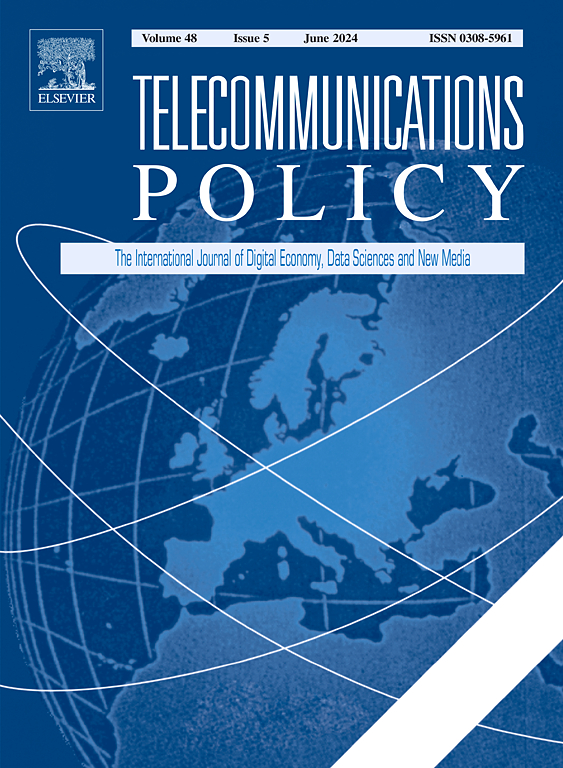Bridging the digital divide: Analyzing subsidy allocation efficiency in telecom sector reforms
IF 6.4
2区 管理学
Q1 COMMUNICATION
引用次数: 0
Abstract
This paper aims to introduce the 'Subsidy Allocation Efficiencies' (SAE) metric as a practical tool for policymakers to evaluate subsidy programs for universal service provisioning. Using a qualitative case study approach, the paper investigates various subsidy allocation methods adopted by the Universal Service Fund, comparing them in terms of SAE. The SAE metric is validated by applying the ‘similarity index’ to Milgrom's optimal auction design. The study finds that subsidy allocations can be as efficient as 95% and as inefficient as −16%, generally identifying them as restrictive and prone to cartelization. Bidders often exploited allocation rules, leading to poor subsidy allocation efficiency, and subsidy benchmarking was found to lack rigor. However, ease of participation was found to reduce cartelization and improve efficiency. The saved funds from accurately benchmarked and efficiently allocated subsidies can be used to cover more beneficiaries or reduce the universal service levy rate, easing the burden on consumers. Focusing on India's Universal Service Fund, this study critically assesses subsidy allocation methods to provide policymakers with insights for optimizing public-funded infrastructure projects. It addresses the lack of empirical research on Subsidy Allocation Efficiency (SAE) and challenges the assumption that auctions alone guarantee efficient subsidy allocation, emphasizing the importance of bidding rules.
弥合数字鸿沟:分析电信部门改革中的补贴分配效率
本文旨在介绍“补贴分配效率”(SAE)指标,作为政策制定者评估普遍服务提供补贴计划的实用工具。本文采用定性案例研究方法,对普遍服务基金采用的各种补贴分配方法进行了研究,并从SAE角度对其进行了比较。通过将“相似性指数”应用于Milgrom的最佳拍卖设计,SAE指标得到了验证。研究发现,补贴分配的效率最高可达95%,效率最低可达- 16%,通常认为补贴分配是限制性的,容易形成卡特尔化。投标方经常利用分配规则,导致补贴分配效率不高,补贴标杆缺乏严密性。但是,人们发现,易于参与可以减少卡特尔化和提高效率。准确基准和有效分配补贴节省的资金可用于覆盖更多受益人或降低普遍服务征税率,从而减轻消费者的负担。本研究以印度的普遍服务基金为重点,批判性地评估了补贴分配方法,为政策制定者提供优化公共资助基础设施项目的见解。本文解决了补贴分配效率(SAE)实证研究的不足,挑战了仅靠拍卖就能保证补贴有效分配的假设,强调了竞标规则的重要性。
本文章由计算机程序翻译,如有差异,请以英文原文为准。
求助全文
约1分钟内获得全文
求助全文
来源期刊

Telecommunications Policy
工程技术-电信学
CiteScore
10.80
自引率
12.50%
发文量
122
审稿时长
38 days
期刊介绍:
Telecommunications Policy is concerned with the impact of digitalization in the economy and society. The journal is multidisciplinary, encompassing conceptual, theoretical and empirical studies, quantitative as well as qualitative. The scope includes policy, regulation, and governance; big data, artificial intelligence and data science; new and traditional sectors encompassing new media and the platform economy; management, entrepreneurship, innovation and use. Contributions may explore these topics at national, regional and international levels, including issues confronting both developed and developing countries. The papers accepted by the journal meet high standards of analytical rigor and policy relevance.
 求助内容:
求助内容: 应助结果提醒方式:
应助结果提醒方式:


